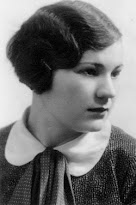 |
| Roodzant circa 1959 |
In May 1918 she married David Roodzant, a banker whose mother died on his wedding day. After their marriage the couple moved to Barking, a suburb of London where she and her husband had previously worked in the British war industry during the First World War. They returned to the Netherlands in 1922.
From 1920 to 1939, Roodzant was the uncrowned lady champion of the Netherlands. Officially, the title did not exist because there were too few female chess players. Consequently, she mainly played against male players.
In 1935, 1936, 1938 and 1939, she was officially the Dutch women's champion according to the Royal Dutch Chess Federation. In 1939 she lost the title when she was defeated by Fenny Heemskerk. Oddly, Heemskerk worked as a secretary for the same company where Rooszant’s brother, Arie Glimmerveen, worked as a printer and later as chief printer.
Roodzant participated in international tournaments in the 1930s, including in Stockholm and in 1939 she was playing in the Women's World Championship tournament in Buenos Aires when World War II broke out in September 1939. She was among those players who elected to return to Europe. After the death of her husband she worked in an office for over seven years and then, when she was 67, for a while at a shipping company.
 |
| Roodzant at 100 |
The below game was played in the 1939 women’s world championship in Buenos Aires against Elena Lukauskiene (January 1, 1909 – March 17, 1959)
of Lithuania. She was a two-time Lithuanian Women's Champion.
From the late 1930s to the early 1950s she was known as one of the strongest players in Lithuania.
She participated in the pre-war chess tournaments under the surname of her first husband (Raclauskiene). After World War II, she continued to participate in tournaments.
In spring 1944, she and her second husband Mikas Lukauskas (1911–1996) saved two Jewish children, Pesach and Khana Joselevich, ages nine and five.
 |
| Lukauskiene |
Elena Raclauskiene - Catharina Roodzant
Result: 0-1
Site: Buenos Aires
Date: 1939.08
Colle System
[...] 1.d4 d5 2.e3 ♘f6 3.♗d3 The Colle is often sold as one of those openings that white can play against anything black plays and while that is true, and it can be very dangerous, you cannot play it without bothering to learn any lines. Don't believe it? Just pick up a book on the Colle and look at all the chapter divisions based on what black plays! 3...♘bd7 4.♘f3 c5 5.c3 g6 Safest. 6.O-O ♗g7 7.♘bd2 O-O This position resembles a reverse Catalan where white has an extra move and the B is on d3, not e3. White has little to fear...nor does black because the fianchettoed B renders the white B impotent. 8.♖e1 a6 Black has several good choices here: 8...e5, 8...Re8. 8...Qc7 and 8. ..b6. The move she played is harmless. 9.e4 Often this is the move that white strives to play in the Colle, but here it's not so good because it opens the position up to black's advantage. A good alternative was 9.b3 and 10.Bb2 9...cxd4 10.♘xd4 Losing a Pawn,
10.cxd4 dxe4 11.♘xe4 ♘xe4 12.♗xe4 White has the isolated d-Pawn, but none of the attacking advantages that usually come with it and so would be at a long term disadvantage in the ending.
10...♘c5 11.♗c2 ♘cxe4 12.♘xe4 ♘xe4 13.♗xe4 dxe4 14.♗e3 e5 15.♘b3 ♗d7 Better was 15...f5 defending the P on e4. (15...f5 16.♕xd8 ♖xd8 17.♖ed1 ♗e6 and black is better.) 16.♗c5 ♖e8 17.♖xe4 ♗c6 Even after losing the e-Pawn black's position remains a smidgen better. 18.♖e1 ♕g5 A clever move! White should defend against the mate threat with 19.f3 and after 19...Rad8 black would be only slightly better. 19.g3 This is a huge mistake that fatally weakens the white squares around the K. 19...♕f5 With the threat of ...Qh3 20.♕e2 So as to meet 20...Qh3 with 21.Qf1 20...♗h6 Black has a nice position and while this move isn't bad by any means she could strengthen her position by 20. ..Rad8 and 21...h5. White should no play 21.Be3 and and as soon as possible bring her R on a1 to d1 and try to hang on. 21.♖f1 An atrocious blunder. The whole point of her 20th move was to play the Q to f1 in answer to the threat of ...Qh3 and this move takes away the f1 square from the Q. 21...♗f3 White must surrender her Q or allow a mate on g2 so she resigned. Powered by Aquarium

No comments:
Post a Comment